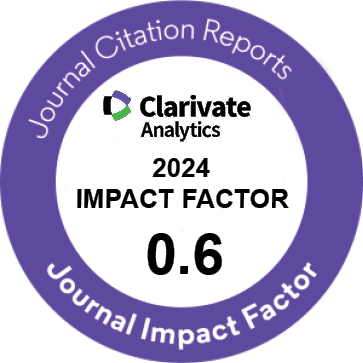| Original Article | |
| The Early Versus Standard Administration of Cabergoline to Prevent Ovarian Hyperstimulation Syndrome in Patients With Polycystic Ovary Syndrome Undergoing ICSI Cycles: A Randomized Clinical Trial | |
| Roza Shahhosseini1, Ashraf Moini1,2,3, Nazanin Hajizadeh4, Ladan Kashani1, Maryam Farid Mojtahedi1, Farzaneh Alemohammad1, Farah Ghasemi1, Najmeh Zarei1 | |
| 1Department of Gynecology and Obstetrics, Infertility Ward, Arash Women’s Hospital, Tehran University of Medical Sciences, Tehran, Iran 2Breast Disease Research Center (BDRC), Tehran University of Medical Sciences, Tehran, Iran 3Department of Endocrinology and Female Infertility, Reproductive Biomedicine Research Center, Royan Institute for Reproductive Biomedicine, ACECR, Tehran, Iran 4Preventive Gynecology Research Center, Shahid Beheshti University of Medical Sciences, Tehran, Iran |
|
|
IJWHR 2025; 13: 057-062 DOI: 10.15296/ijwhr.2024.6013 Viewed : 1015 times Downloaded : 1794 times. Keywords : Cabergoline, Polycystic ovary syndrome, Ovarian hyperstimulation syndrome, Drug administration schedule |
|
| Full Text(PDF) | Related Articles | |
| Abstract | |
Objectives: The effect of cabergoline on reducing the incidence rate of ovarian hyperstimulation syndrome (OHSS) has been confirmed by several studies. Currently, what is discussed in this regard is when cabergoline should be started to be most effective in reducing the occurrence and developing rates of OHSS. Materials and Methods: A clinical trial conducted at Arash Women’s Hospital from March to November 2023 included 200 infertile women with polycystic ovary syndrome (PCOS) at risk of OHSS during in-vitro fertilization/intracytoplasmic sperm injection (IVF/ICSI) treatment. Participants were divided into two groups: the experimental group received cabergoline from the start of GnRH antagonist administration for 15 days, and the control group received cabergoline for eight days after oocyte trigger. Measurements of hematocrit (Hct) percentage, serum creatinine (Cr), sodium (Na), and potassium (K) levels, and abdominal circumference were taken three days after ovum pick-up. The study monitored patients until menstruation and focused on the occurrence and severity of OHSS as primary outcomes. Results: The data analysis showed that the two groups were comparable regarding basic characteristics. In the following, the OHSS rate in the early administration group was significantly lower than the control group (14% vs. 47%, P<0.001). In the study group, the severity of all OHSS cases was mild, while the control group reported a moderate severity of OHSS (P<0.001). Conclusions: Earlier initiation of cabergoline from the time of administration of the GnRH antagonist compared to its initiation from the day of oocyte triggering has more effectively reduced the rate and severity of OHSS and improved patient satisfaction. Trial Registration: The study was registered in the Iranian Registry of Clinical Trials on 2023-05-30 (identifier: IRCT20090526001952N16, https://www.irct.ir) during the recruitment phase. |
Cite By, Google Scholar
Google Scholar
PubMed
Online Submission System
 IJWHR ENDNOTE ® Style
IJWHR ENDNOTE ® Style
 Tutorials
Tutorials
 Publication Charge
Women's Reproductive Health Research Center
About Journal
Publication Charge
Women's Reproductive Health Research Center
About Journal
Aras Part Medical International Press Editor-in-Chief
Arash Khaki
Mertihan Kurdoglu Deputy Editor
Zafer Akan






















